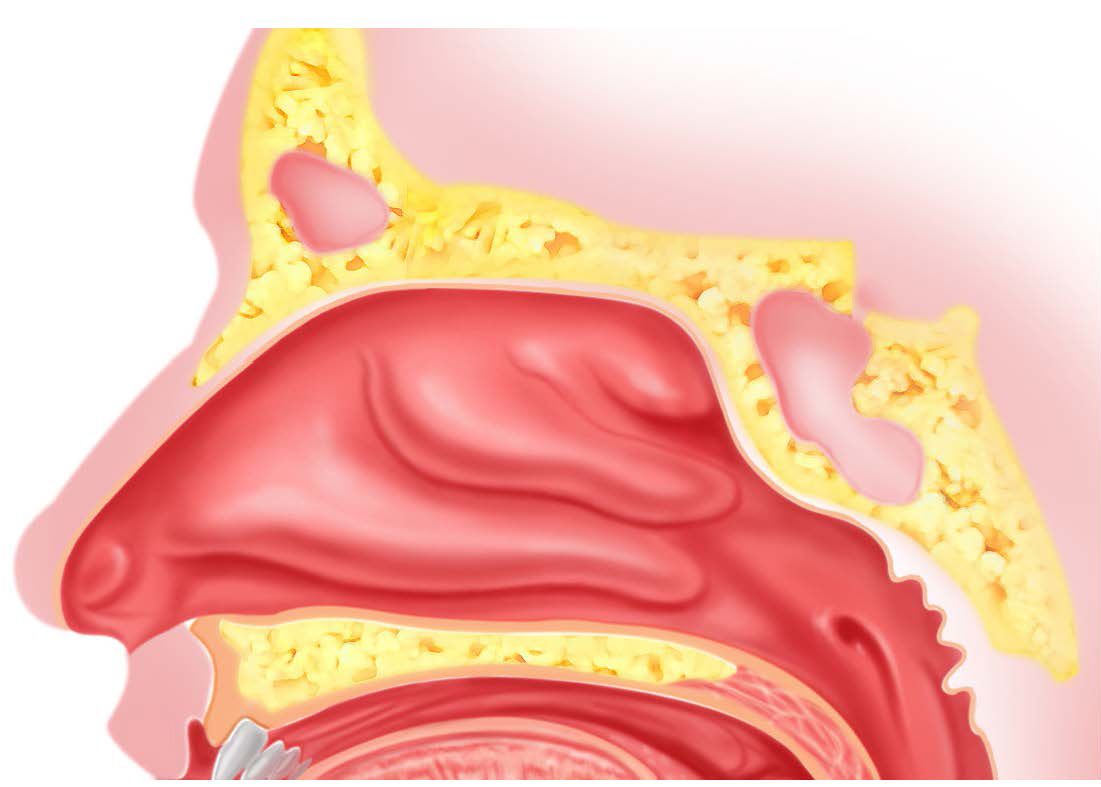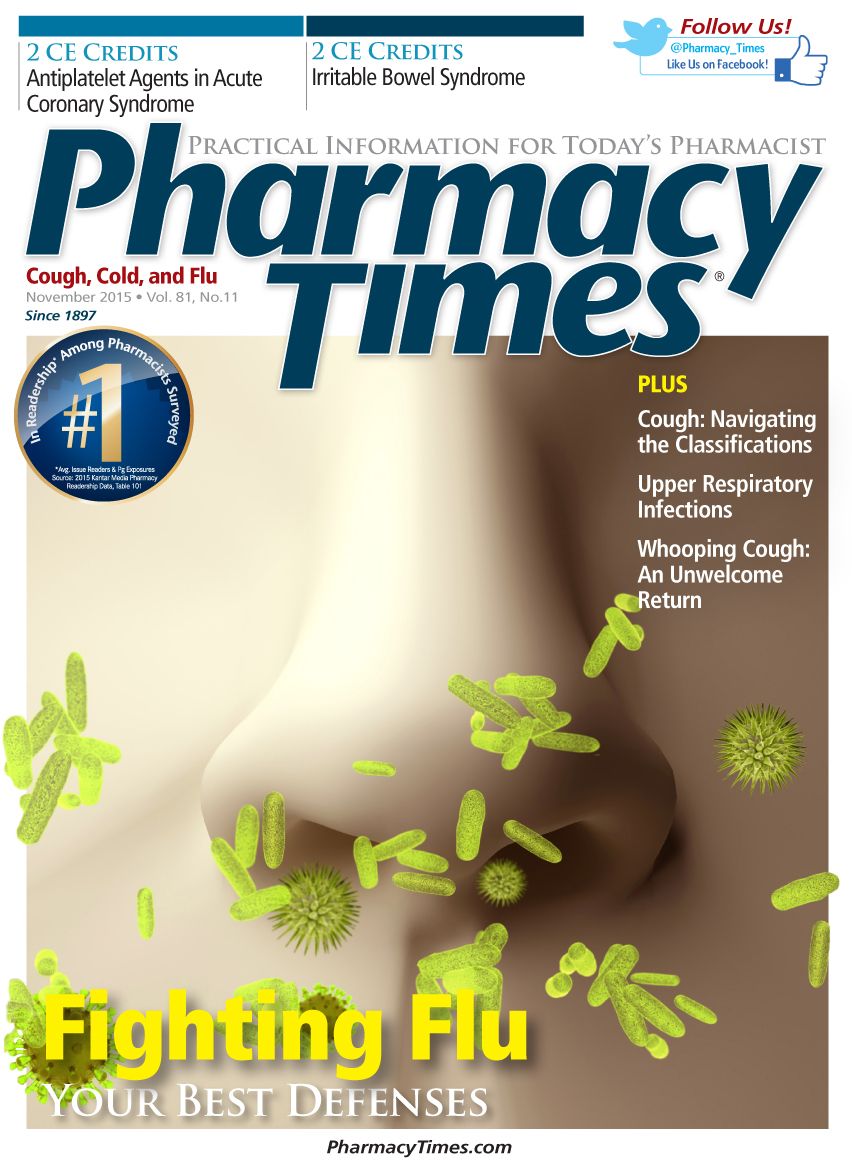Publication
Article
Pharmacy Times
Intranasal Corticosteroids for Allergic Rhinitis: Considerations for Product Selection
This article was sponsored by Chattem, Inc.

Currently, 9 intranasal corticosteroids (INSs) are approved for use in the United States for allergic rhinitis (AR) and are available by prescription.1,2 As of October 2015, 3 INSs have received OTC status for AR (Nasacort Allergy 24 Hour, Flonase Allergy Relief, and Rhinocort Allergy) and 2 products are currently available over-the-counter (Nasacort Allergy 24 Hour and Flonase Allergy Relief).3-7 Pharmacists have an important role in clarifying the efficacy of INSs as a class and describing some of the important differences between products to help patients choose an appropriate treatment for AR symptoms.
Efficacy and Safety Data
In a comprehensive review of INSs published in the American Journal of Rhinology in 2007, researchers compared budesonide (eg, Rhinocort), mometasone furoate (eg, Nasonex), fluticasone propionate (eg, Flonase), and triamcinolone acetonide (eg, Nasacort) in terms of efficacy, safety, and patient preference. All INSs were similarly effective and well tolerated in the treatment of AR. The review of preference studies suggests that formulation may influence patient preference based on product sensory characteristics.8
Consistent with this review, guidelines rate INSs as the most effective class of medication for relief of AR symptoms9 and note that efficacy is similar among available formulations.1,8 However, the guidelines acknowledge that treatment must be individualized.9 As all INSs are similar in efficacy, other factors should be considered when selecting an INS, including product sensory attributes and each medication’s distinct physicochemical properties. Individual product formulations and the properties of active ingredients may have clinically relevant effects and may influence patient adherence and real-world efficacy.1
Product Characteristics
Important product characteristics that may affect patient preference and adherence include formulation differences and variations in scent characteristics. Unlike fluticasone propionate nasal spray, triamcinolone acetonide nasal spray is free of alcohol and was formulated to be free of taste and odor. In a multicenter, randomized, double-blind, crossover study, patients preferred triamcinolone acetonide aqueous over fluticasone propionate and mometasone furoate due to a moisturizing effect and a lack of odor and taste.10 Similar results were reported in a comparative review, which noted patient preference for triamcinolone acetonide over fluticasone propionate or mometasone furoate.8
Other important characteristics of individual INSs that may affect patient preference are the physicochemical properties of the active ingredient, such as lipophilicity. The inherent lipophilicity of a molecule has important effects on drug delivery, particularly in AR, whereby major barriers to drug delivery in the nasal mucosa are the presence of copious mucous and nasal inflammation.9,11,12 Proteins embedded in mucous tend to trap very lipophilic drugs (such as corticosteroids), potentially interfering with their delivery to the nasal mucosa.11,12

Lipophilicity varies among products, as shown in the Table.11 Fluticasone propionate and mometasone furoate have a high degree of lipophilicity and beclomethasone dipropionate (eg, Qnasl) an intermediate/high lipophilicity, both compared with budesonide and triamcinolone acetonide.11
Because high lipophilicity may impair drug delivery through mucous membranes, choosing a product with low lipophilicity may enable the product to penetrate mucous and reach the nasal membrane.11 Triamcinolone acetonide is well suited for delivery through mucous membranes due to its low lipophilicity.11 Because of this characteristic, rather than being trapped in the mucous, triamcinolone acetonide may be able to penetrate the hydrophilic mucous barrier of the nasal mucosa more effectively than other products.
Role of the Pharmacist
Three INSs previously available by prescription only have been approved for OTC use, and 2 are available for OTC use as of October 2015 (Nasacort Allergy 24 Hour and Flonase Allergy Relief).3-7 Guidelines for the treatment of AR note that INSs are similar in efficacy and that treatment should be individualized.1,8,9
When helping patients select an appropriate medication for AR, pharmacists should consider product sensory characteristics, which may affect patient preference and adherence, and physicochemical characteristics, such as lipophilicity, which may influence drug delivery.1,8,11 Taking all of these factors into account, pharmacists can help patients with AR select an INS product suitable for their needs.
References
- Seidman MD, Gurgel RK, Lin SY, et al; Guideline Otolaryngology Development Group. AAO-HNSF. Clinical practice guideline: allergic rhinitis. Otolaryngol Head Neck Surg. 2015;152(suppl 1):S1-S43. doi: 10.1177/0194599814561600.
- Beconase AQ (beclomethasone dipropionate, monohydrate) nasal spray [package insert]. Research Triangle Park, NC: GlaxoSmithKline; 2005.
- Flonase NDA, Approval NDA 205434. FDA website. www.accessdata.fda.gov/drugsatfda_docs/appletter/2014/205434Orig1s000ltr.pdf. Accessed October 6, 2015.
- Nasacort supplement approval, NDA 020468/S-035. FDA website. www.accessdata.fda.gov/drugsatfda_docs/appletter/2013/020468Orig1s035ltr.pdf. Accessed October 6, 2015.
- Rhinocort supplement approval, NDA 020746/S-032. FDA website. www.accessdata.fda.gov/drugsatfda_docs/appletter/2015/020746Orig1s032ltr.pdf. Accessed October 6, 2015.
- Flonase Allergy Relief drug facts. Flonase website. www.flonaseprofessional.com/content/dam/NA_Pharma/Country/US/Brands/Flonase/Digital/Web/PDFs/en_us/flute-expert-site/resources/FLONASE_Drug_Facts.pdf. Published December 2014. Accessed October 6, 2015.
- Nasacort Allergy 24HR drug facts. Nasacort website. http://nasacort.com/hcp/downloads/NAS_DrugFacts_FNL-4.pdf. Accessed October 6, 2015.
- Herman H. Once-daily administration of intranasal corticosteroids for allergic rhinitis: a comparative review of efficacy, safety, patient preference, and cost. Am J Rhinol. 2007;21(1):70-79.
- Wallace DV, Dykewicz MS, Bernstein DI, et al; Joint Task Force on Practice; American Academy of Allergy, Asthma & Immunology; American College of Allergy, Asthma and Immunology; Joint Council of Allergy, Asthma and Immunology. The diagnosis and management of rhinitis: an updated practice parameter. J Allergy Clin Immunol. 2008;122(suppl 2):S1-S84. doi: 10.1016/j.jaci.2008.06.003.
- Bachert C, El-Akkad T. Patient preferences and sensory comparisons of three intranasal corticosteroids for the treatment of allergic rhinitis. Ann Allergy Asthma Immunol. 2002;89(3):292-297.
- Lipworth BJ, Jackson CM. Safety of inhaled and intranasal corticosteroids: lessons for the new millennium. Drug Saf. 2000;23(1):11-33.
- Sigurdsson HH, Kirch J, Lehr CM. Mucus as a barrier to lipophilic drugs. Int J Pharm. 2013;453(1):56-64.








